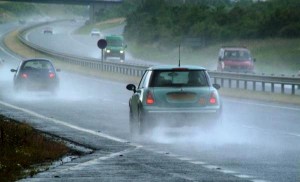Hazards
 What is a Hazard?
What is a Hazard?
A hazard is any situation which could involve adjusting your speed or changing course.
To identify a hazard you must look well ahead for clues such as:
Roadsigns, parked vehicles, changes in road conditions, junctions, cyclists, motorcyclists, pedestrians, horse riders, animals, roadworks, roundabouts.
Observing What’s Ahead:
A skillful driver constantly watches and interprets what’s happening ahead.
Remember as soon as you’ve recognised a hazard, you must use the mirrors to assess:
- How your actions will affect following traffic.
Allowing time and space:
Always leave yourself enough time and space to cope with what’s ahead:
- Keep your eyes moving
- Look well ahead
- Check regularly on what’s following you
- Watch for clues about what’s going to happen next
Example:
A parked car could spell danger if the driver is sitting in it. If you can see vapour from the exhaust in cold weather, this could indicate:
- A door might open suddenly
- A car might pull out without warning
Do:
Always drive at such a speed that you can stop safely within the distance you can see to be clear.
A good driver will constantly scan the road ahead and to the side and by frequent use of the mirrors, to be aware of the situation behind.
Don’t:
Drive beyond your limits of vision.
Approaching a bend, ask yourself:
- Can I see the full picture?
- How sharp is it?
- Am I in the right position?
- Is my speed right?
- What might I meet?
- Could I stop if I had to?
Approaching a junction, ask yourself:
- Have I seen the whole junction?
- Can other drivers see me?